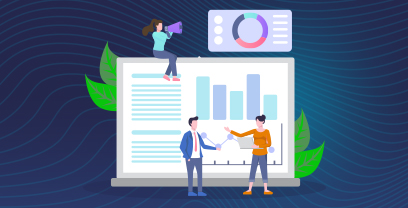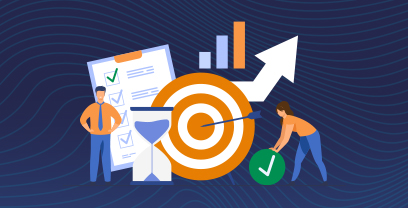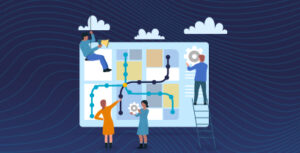Enterprise procurement leaders are under more pressure than ever—juggling cost control, compliance, supplier risk, and internal complexity, all while trying to modernize outdated systems. If you’re exploring procurement technology, chances are you’re not just looking for a better tool – rather, you’re looking for a smarter, scalable strategy.
This guide breaks down the key procurement technologies in use today and the trends reshaping the future, such as AI-driven sourcing, predictive risk management, and deeper integration across the supply chain.
Key Takeaways
- Procurement technology is evolving from basic digitization to a strategic enabler, helping enterprises automate processes, reduce risk, and improve supplier collaboration.
- Modern platforms unify the entire Source-to-Pay lifecycle, offering real-time visibility, integrated compliance controls, and advanced analytics across sourcing, contracts, and payments.
- AI, automation, and generative tools are redefining efficiency, allowing procurement teams to move from reactive to proactive decision-making.
- Scalability, integration, and flexibility are critical when choosing a platform, ensuring long-term value and the ability to adapt as procurement needs evolve.
What Is Procurement Technology?
Broadly speaking, procurement technology encompasses the digital e-procurement tools and systems used to automate, streamline, and optimize the entire Source-to-Pay (S2P) lifecycle.
It forms the foundation of digital procurement, enabling better spend visibility, improved compliance, and faster, more efficient operations.
The scale, complexity, and risk involved in global operations within the modern enterprise demand more advanced solutions that can integrate tightly with ERP, finance, and supplier systems and support broader goals such as sustainability, risk management in procurement, and cost optimization.
That’s why many organizations are undergoing procurement transformation, and shifting from manual, siloed processes to connected, data-driven strategies. This evolution reflects procurement’s growing role as a strategic business partner.
Pro Tip: The best procurement technologies don’t just digitize — they deliver insights, collaboration, and control.
Let’s take a look at some of the key components of procurement technology for today’s enterprises.
Key Components of Procurement Technology for Enterprises
Procurement leaders are finding that their legacy systems are insufficient as they face mounting pressure to scale globally, enforce compliance, and drive strategic value. They need a unified Source-to-Pay platform that enables procurement automation and deeper integration across finance, operations, and supply chain management (SCM).
Here are 4 key components of a unified procurement technology platform:
- Advanced Data and Process Management: Managing spend across regions and suppliers requires real-time visibility and control. Your procurement technology platform should help unify data and processes across tiers to avoid disruptions. It should also strengthen supply chain collaboration across global supply chains, multi-tier supplier networks, and high-value contracts.
- Compliance and Risk Management: The platform should help enforce policies with workflow automation, mitigate supplier risk using real-time analytics and AI, and support audit-readiness with centralized documentation and controls.
- Strategic Procurement and Supply Chain Management: The technology you use should help you move beyond cost-cutting to build sustainable, performance-driven supplier relationship management that delivers long-term value and innovation.
- Integrated with Your Technology Stack: Procurement technology should help you break down silos by integrating seamlessly with finance and SCM systems and providing real-time insights for better forecasting, cash flow planning, and strategic decision-making.
Procurement Tech Stack Overview
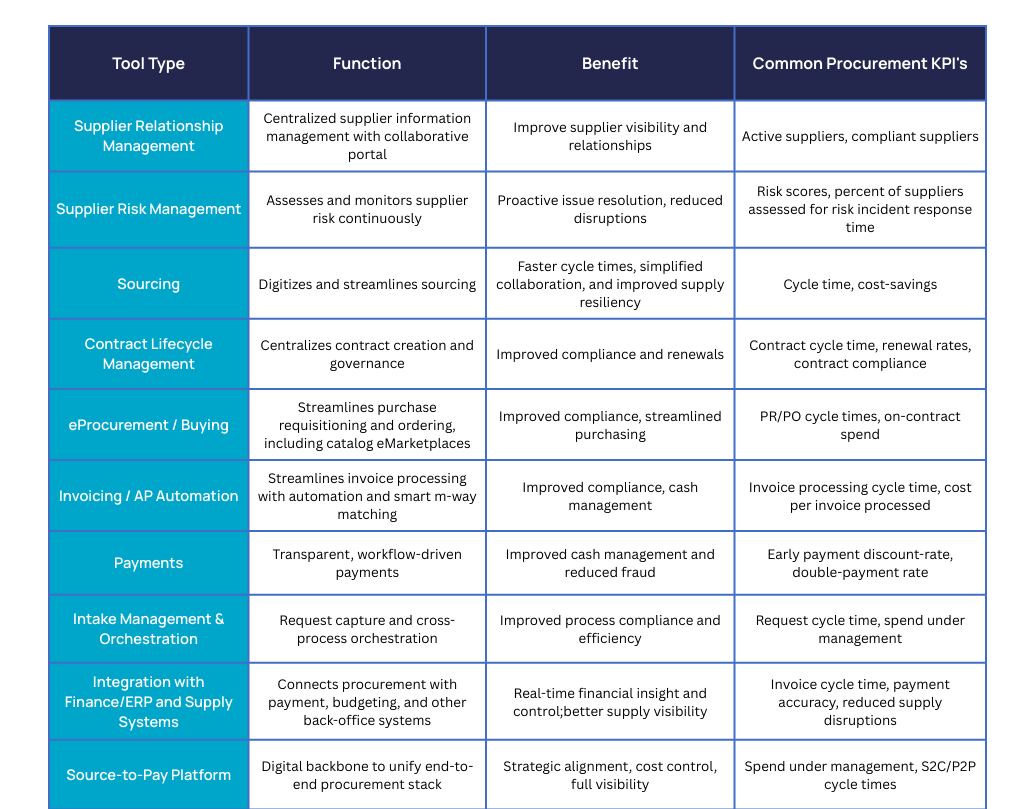
Download our Source-to-Pay Technology Buyer’s Guide to explore what to look for in a procurement solution—and how to select the vendor that best aligns with your organization’s goals and values.
Key Procurement Technologies and Where the Industry Is Headed
Having an overview of the components of procurement software is essential, but keep in mind that complex global supply chains and disruptions are pushing procurement leaders to continuously evolve. This means the key components of modern procurement technology solutions are in flux – and, according to McKinsey & Company, leading procurement organizations are leveraging digital tools and data analytics to uncover new opportunities for value creation.
In this section, we look at some of the foundational tools enterprises are using today to transform procurement from a tactical to a strategic function.
Core Procurement Tech already Powering Enterprise Operations
Procurement teams are already seeing significant gains from integrated technology. By consolidating tools and replacing manual processes, modern platforms are reducing risk, improving efficiency, and delivering greater visibility across the procurement lifecycle.
Rather than relying on fragmented systems, many organizations are turning to end-to-end solutions that unify the most critical procurement technologies in one place. Here are some of the most important tools teams are already using.
Source-to-Pay (S2P) Platforms for End-to-End Procurement
Integrated Source-to-Pay platforms eliminate the fragmentation that often plagues procurement functions. By unifying sourcing, procurement, and payments in a single solution, integrated procurement platforms empower you to collaborate more effectively, streamline processes, and gain real-time visibility across the entire procurement lifecycle.
This end-to-end integration helps organizations reduce risk, boost efficiency, and make more strategic, data-driven decisions.
Here are some of the most impactful functionalities and benefits of procurement technology along the S2P process:
Sourcing
Innovative procurement technologies play a vital role in digitizing and streamlining the sourcing process. Advanced AI capabilities and analytics dashboards help you make informed, data-driven decisions.
Read Ardent Partners’ 2024 Strategic Sourcing Technology Advisor report, which explores eight solutions and market leaders in the strategic sourcing space.
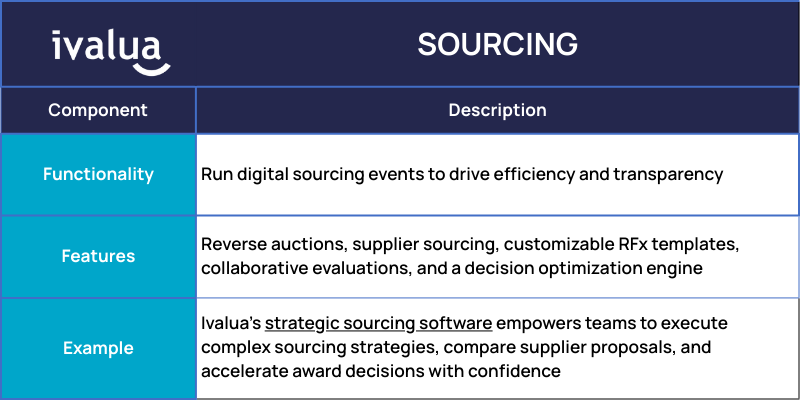
Automation for Efficiency and Decision-making
Automation reduces manual workload, shortens cycle times, and minimizes errors, freeing your team up to focus on strategic priorities. Integrated procurement platforms offer invoice processing, automated approvals and self-service supplier portals to streamline operations while enforcing compliance. Built-in workflows ensure the right actions happen at the right time, improving both speed and control, and optimizing the procurement process.
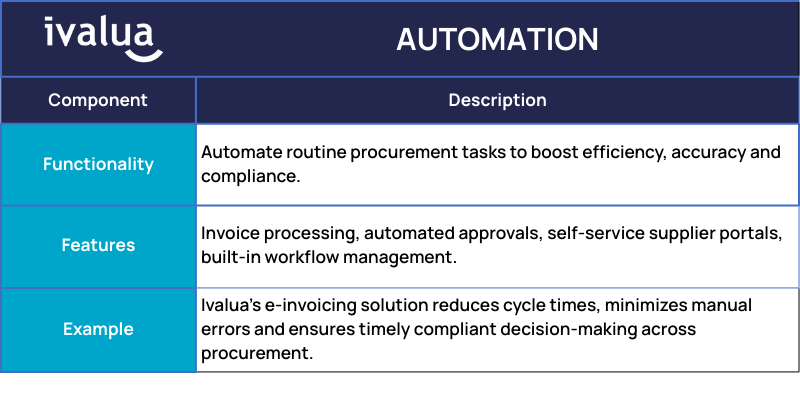
Supplier Risk Management and Compliance
Modern procurement technology enhances supplier collaboration through centralized onboarding, scorecards, and real-time risk monitoring, all of which can be accessible through a self-service supplier portal.
With integrated ESG data, automated due diligence, and audit-ready documentation, you can make smarter decisions, reduce disruption, and meet regulatory requirements with greater confidence.
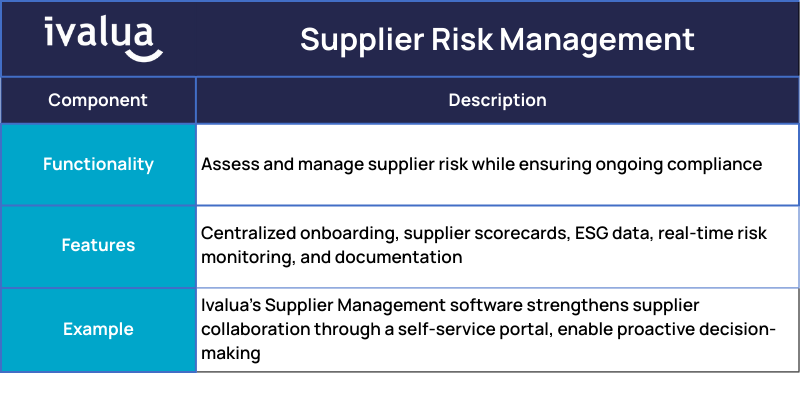
Contract Lifecycle Management (CLM) and Approvals
Procurement technology enables you to streamline the entire contract lifecycle, from authoring and negotiation to approval and renewal. Automated workflows accelerate review cycles, while AI-powered tools surface risky clauses and non-standard terms early in the process.
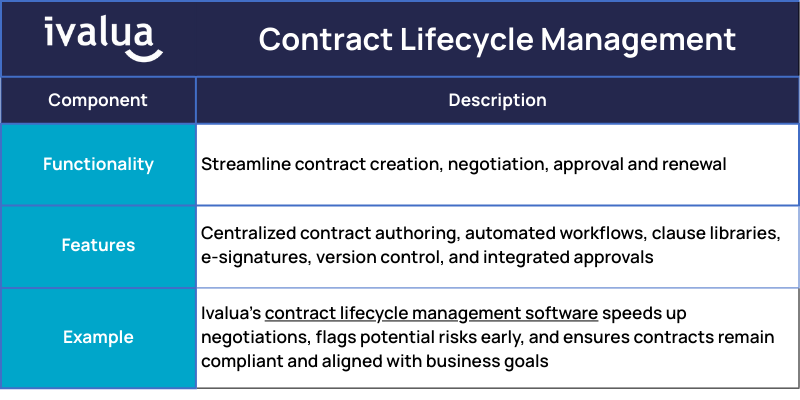
Procurement Analytics and Spend Intelligence
To drive smarter decisions, you need actionable insights. Analytics and spend intelligence tools provide real-time dashboards, detailed tail-spend analysis, and benchmarking capabilities that surface cost-saving opportunities and support strategic planning.
With a unified view of spend across categories, suppliers, and geographies, you can closely align procurement with your business goals.
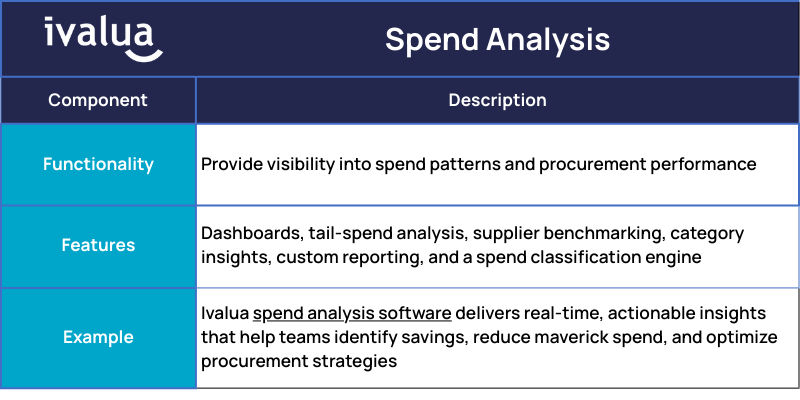
Purchase-to-Pay (P2P) Automation
Automating the purchase-to-pay process is key to reducing manual errors, accelerating procurement cycles, and improving spend control.
A procure-to-pay automation solution streamlines purchase requisitions and invoice approvals, and features like touchless processing of invoices and automated matching ensure compliance while reducing maverick spend. This frees up your team to spend more time on higher-value work.
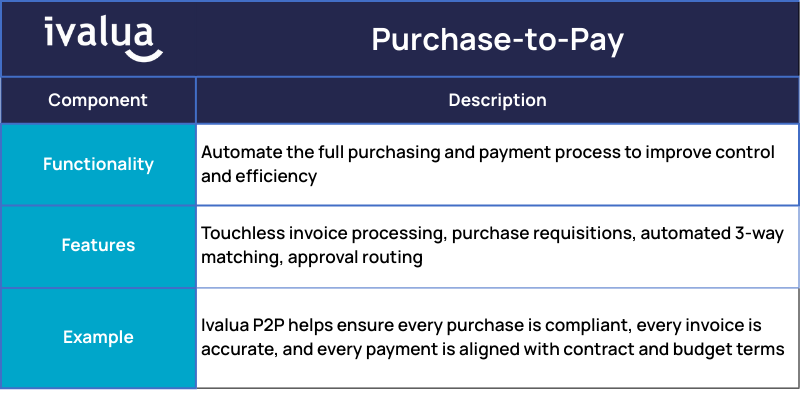
The Next Wave of Procurement Technology
While the tools we explained in the last section are cutting-edge, technology continues to advance.
For procurement, meeting the growing demands around cost optimization, risk mitigation, supplier performance, compliance, and agility will require adopting innovative technologies that expand the role of procurement as a strategic business partner.
We expect the following innovations to have the most impact in procurement departments in the coming months:
- Generative AI: Generative AI stands to redefine efficiency across the procurement lifecycle – however adoption has been slow. According to Deloitte’s 2024 Global Chief Procurement Officer (CPO) Survey, 92% of CPOs planned to assess Generative AI capabilities in 2024 – but only 37% were piloting or deploying it at the time of the survey.
In 2025, implementation is likely to accelerate. From auto-generating RFPs to powering supplier-facing Q&A bots and contract clause drafting, tools like Ivalua’s Intelligent Virtual Assistant (IVA) powered by generative AI is helping procurement teams reduce cycle times and improve accuracy. And with the revolution of Agentic AI happening, semi-and fully-autonomous AI agents are going to help procurement scale and free-up capacity to take on more strategic initiatives.
- Intake Management: Modern procurement requires systems that are flexible, scalable, and built for seamless integration. Ivalua’s AI-powered procurement platform supports configurable interfaces and multi-ERP integration, allowing organizations to unify procurement across global business units without being locked into a single vendor ecosystem.
Explore Ivalua’s intake management solution. - Procurement’s Increasing Integration with Supply Chain Visibility Tools: The ability to connect procurement with live supply chain data is becoming essential for managing risk and improving responsiveness. Ivalua’s open ecosystem enables smooth integration with logistics, supplier performance, and inventory tools, ensuring procurement decisions are informed by the most up-to-date supply chain insights.
If you’re looking for a platform that will support your procurement goals and objectives over the long term, select a scalable, interoperable solution that supports these innovative technologies and features to set your organization up for success now and in the future.
| Download our Generative AI in Procurement Guide to learn how to maximize value, ensure agility, and mitigate the risks of Generative AI. |
How to Choose the Right Procurement Technology for Your Organization
Will the platform you choose hold up for the long term and address all of the challenges you’re facing? Can it address challenges like siloed data, fragmented supplier relationships, evolving compliance demands, and the need for flexibility across global operations? That’s the million-dollar question. Fortunately, it doesn’t have to be a guessing game.
Here are practical criteria – and pitfalls to avoid – to help you refine your requirements and choose a flexible solution that’s built to scale and adapt over time.
Key Factors in Selecting Procurement Technology for Enterprise Use
For enterprise procurement, the right technology must provide:
- Seamless integration with existing ERP systems to eliminate data silos and ensure end-to-end visibility.
- Balance of flexibility and standardization, and the ability to configure according to your specific needs while leveraging proven workflows.
- Strong compliance controls, embedded risk management features, and robust analytics to support governance and strategic decision-making.
Ensuring Long-term Scalability and Adaptability
To avoid costly rip-and-replace cycles, enterprises need procurement technology that’s built to grow and evolve with their organization. That means choosing solutions that offer:
- Modular, API-driven architectures that support easy integration and future expansion.
- The ability to incorporate emerging technologies that enhance decision-making and automation, such as agentic AI in procurement.
- Support for multi-entity and global operations.
- Maximum user adoption through intuitive interfaces and streamlined deployment.
Common Pitfalls to Avoid when Adopting Procurement Solutions
Even with the right intentions, procurement automation projects can fall short if you overlook some potential pitfalls and risks. Avoid these common missteps:
- Over-reliance on outdated ERP modules: Legacy ERP add-ons may cover basic functions but often lack modern features like AI-driven insights, automated workflows, seamless integrations, and supplier collaboration tools.
- Ignoring supplier collaboration needs: Without tools that support real-time communication and shared visibility, supplier engagement suffers, leading to delays, errors, and missed opportunities.
- Underestimating change management: Even the best technology can fail if users aren’t properly trained or if workflows aren’t aligned to how teams actually operate.
- Choosing a closed or rigid system: Limited configurability or poor integration can restrict your ability to scale or adapt to evolving business needs.
- Neglecting data quality: Inaccurate or inconsistent supplier data undermines every process and can have a detrimental impact on analytics and compliance.
Avoiding these pitfalls when implementing procurement technology requires a clear strategy, the right architecture, and a strong focus on long-term usability and impact.
How EnBW Achieved an 80% Increase in Purchase Order Automation
EnBW, one of Germany’s largest critical infrastructure providers, is leading the transition to sustainable energy with operations across Europe and a goal of climate neutrality by 2035. To support this mission and build more transparent supply chains, the company implemented Ivalua’s supplier management platform as a central hub for supplier collaboration and strategic procurement.
Since the 2021 rollout, EnBW has seen a 10% increase in efficiency, an 80% boost in purchase order automation, and significantly improved supplier data quality across 12,000 suppliers. Today, it has more than 6,500 internal users and over 30 million cataloged products.
“Ivalua combines comprehensive options for collaborating with suppliers with a high degree of flexibility,” said Miljenko Galic, Director of Process and Capability Management at EnBW. “The solution also provides the transparency that prompts us to take actions and helps accelerate automation in purchasing.”
View the full EnBW case study.
Turning Procurement Technology Into a Competitive Advantage
For enterprises navigating global complexity, shifting regulations, and rising supplier risk, procurement technology is a strategic investment. The right platform can enable your organization to cut costs, be resilient and have the agility needed to adapt and thrive in changing market dynamics.
Ivalua’s unified Source-to-Pay platform gives your procurement teams the visibility, control, and intelligence they need to drive strategic outcomes—and turn procurement into a true source of competitive advantage.
| Ready to future-proof your procurement strategy? Watch Demo | Explore Platform |
FAQs about Procurement Technology
How does Procurement Software differ from ERP?
Procurement software is purpose-built to manage the entire source-to-pay process, offering deeper functionality for sourcing optimization, supplier collaboration, and contract management. While ERP systems handle core finance and operations, they often lack the flexibility and procurement-specific features needed for modern, strategic sourcing. Explore our multi ERP integrations.
What are the Main Benefits of using Procurement Software?
Procurement software streamlines processes, reduces manual work, and improves visibility into spend and supplier performance. These solutions also help enforce compliance, increase efficiency, and support better decision-making across the organization.
How do I Choose the Right Procurement Platform?
Look for a procurement platform that can scale with your business, integrates with existing systems, and supports both standardized and strategic processes. Prioritize flexibility, supplier collaboration features, and a proven track record of success with organizations similar to yours.
Can Procurement Technology help with ESG and Compliance?
Yes, modern procurement platforms can track ESG metrics, monitor supplier risk, and enforce compliance with regulations and internal policies. They provide the transparency and auditability needed to meet growing sustainability and governance expectations. Explore our environmental impact center.
Further Reading
Guides
- Source-to-Pay Implementation Guide
- The Source-to-Pay Technology Buyer’s Guide
- Generative AI in Procurement Roadmap
Blog
Whitepaper


